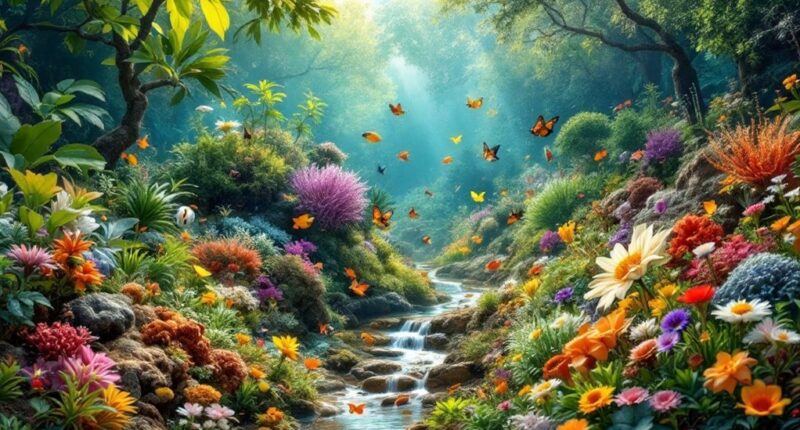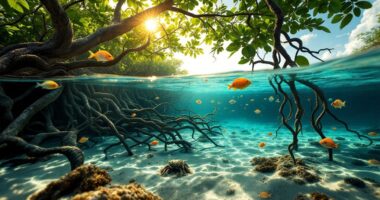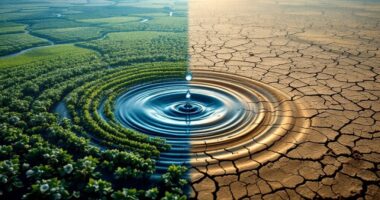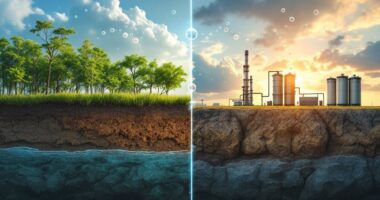Biodiversity represents nature’s ultimate insurance policy—the variety of genes, species, and ecosystems that sustain life on Earth. Like a flying airplane with essential rivets, each species plays an important role in maintaining ecosystem services we depend on: clean air, water, and food production. Today’s threats—habitat destruction, climate change, and pollution—endanger this delicate balance. Conservation strategies from protected areas to international agreements offer hope for preserving nature’s R&D department. The future of sustainability hangs on understanding these complex connections.

Life on Earth, a tapestry of infinite complexity, reveals itself through the concept of biodiversity. This term might sound like scientific jargon, but it’s simply nature’s version of not putting all its eggs in one basket. Biodiversity encompasses the mind-boggling variety of genes, species, and ecosystems that make our planet buzz with life—from microscopic soil bacteria to towering redwoods, from desert ecosystems to coral reefs teeming with colorful characters.
Biodiversity: Earth’s strategy of spreading bets across a dazzling array of life forms, ensuring nature never goes bankrupt.
Think of biodiversity as nature’s insurance policy. It operates across multiple scales, from the genetic variation within species (why not every human looks like your Uncle Bob, thankfully) to the kaleidoscope of species in an ecosystem, to the patchwork quilt of different ecosystems across landscapes. Scientists measure this variety through metrics like species richness (the ecological equivalent of counting stamps in a collection) and evenness (making sure one species isn’t hogging all the ecological real estate).
Why should we care? Well, biodiversity isn’t just pretty to look at—it’s keeping us alive. Those ecosystem services you enjoy—clean air, drinkable water, food on your plate—are courtesy of biodiversity working behind the scenes. It’s nature’s R&D department, constantly innovating solutions to environmental challenges. Without it, we’d be up the ecological creek without a paddle. Biodiversity also provides supporting services that maintain habitat for countless species, ensuring ecosystem functionality and resilience.
Unfortunately, humanity has been treating Earth’s biodiversity like an all-you-can-eat buffet with no closing time. Habitat destruction, climate change, pollution, and invasive species are taking a toll. It’s like removing rivets from an airplane while it’s flying—you might get away with a few, but keep going and the results won’t be pretty. Biodiversity also varies dramatically over time due to natural selection processes that continuously reshape our planet’s living systems. Forward-thinking companies are now conducting impact assessments to understand how their operations affect biodiversity and develop strategies to minimize harm.
Conservation efforts are fighting back through protected areas (nature’s VIP rooms), sustainable management practices, and restoration projects. From seed banks preserving genetic diversity to international agreements like the Convention on Biological Diversity, we’re finally recognizing that biodiversity isn’t just nice to have—it’s essential for a sustainable future where humans and nature thrive together.
Frequently Asked Questions
How Can Individuals Contribute to Biodiversity Conservation?
Individuals can make meaningful contributions to biodiversity conservation through everyday choices. They can support local and sustainable agriculture, create wildlife-friendly spaces in their yards, make eco-conscious consumer decisions, and engage in conservation efforts.
Simple actions like planting native species, reducing animal product consumption, avoiding harmful pesticides, and participating in citizen science projects collectively help preserve the complex web of life that sustains our planet.
What Economic Benefits Does Biodiversity Provide?
Biodiversity provides substantial economic benefits across sectors. It contributes $235-577 billion annually to agriculture through pollination and supports a global food system reliant on diverse soil organisms.
Ecosystem services total approximately $150 trillion yearly—double the world GDP. Pharmaceuticals draw over 50% of modern medicines from natural sources.
Additionally, biodiversity creates opportunities through eco-tourism and sustainable agriculture while mitigating risks associated with market volatility and supply chain disruptions.
How Does Climate Change Affect Biodiversity?
Climate change devastates biodiversity through multiple pathways. Rising temperatures force species to relocate, with land animals moving 3.8 miles per decade and marine species shifting 17 miles northward.
Habitats shrink as weather patterns intensify, while ocean acidification damages coral ecosystems. The timing of natural events like migration and breeding becomes disrupted, creating dangerous mismatches between interdependent species.
These pressures have accelerated extinction rates to 30-120 times higher than historical levels, threatening approximately one million species globally.
Which Regions Have the Highest Biodiversity Loss Rates?
Latin America and the Caribbean has experienced the most severe biodiversity decline, with a staggering 94% reduction in monitored wildlife populations since 1970.
Africa follows with a 66% decrease, while Asia Pacific shows a 55% drop in the same period.
North America has fared somewhat better but still faces a significant 33% decline.
These regional disparities reflect different intensities of habitat destruction, exploitation, and climate change impacts.
Can Extinct Species Be Brought Back Through Technology?
Current technology offers several avenues for de-extinction, though with important limitations.
Scientists employ methods like back-breeding, cloning, and genome editing—particularly using CRISPR technology—to resurrect extinct species. Projects targeting woolly mammoths, passenger pigeons, and Tasmanian tigers are already underway.
However, challenges abound: DNA degradation, fragmented genomes, and mitochondrial differences mean these efforts create hybrids rather than perfect replicas. The resulting organisms represent scientific approximations, not identical resurrections of extinct species.









